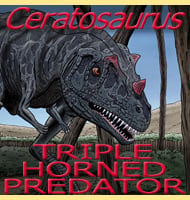Nhandumirim
In Depth Nhandumirim is a genus of saurischian dinosaur that lived in South America during the late Triassic. Nhandumirim has been interpreted both as a theropod dinosaur by some and a sauropodomorph by others. Unfortunately the lack of fossil preservation of the holotype individual makes it hard to be certain which. Further Reading - A … Read more
